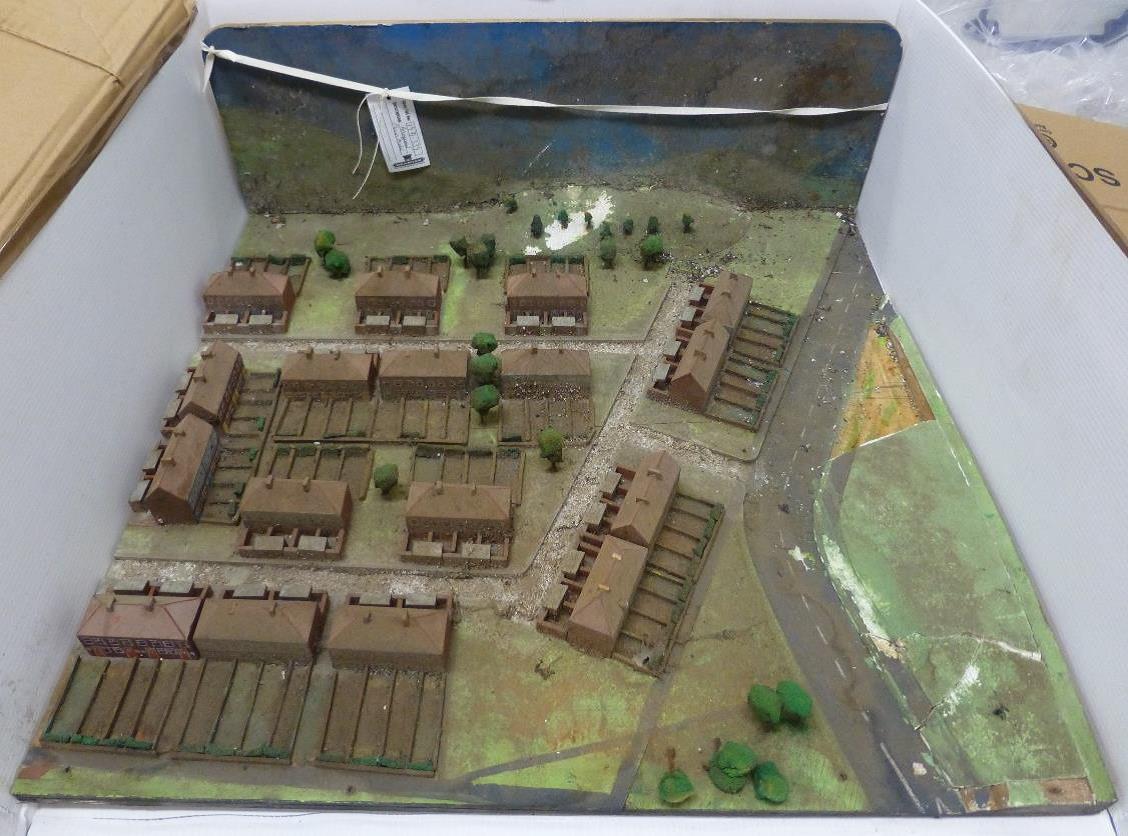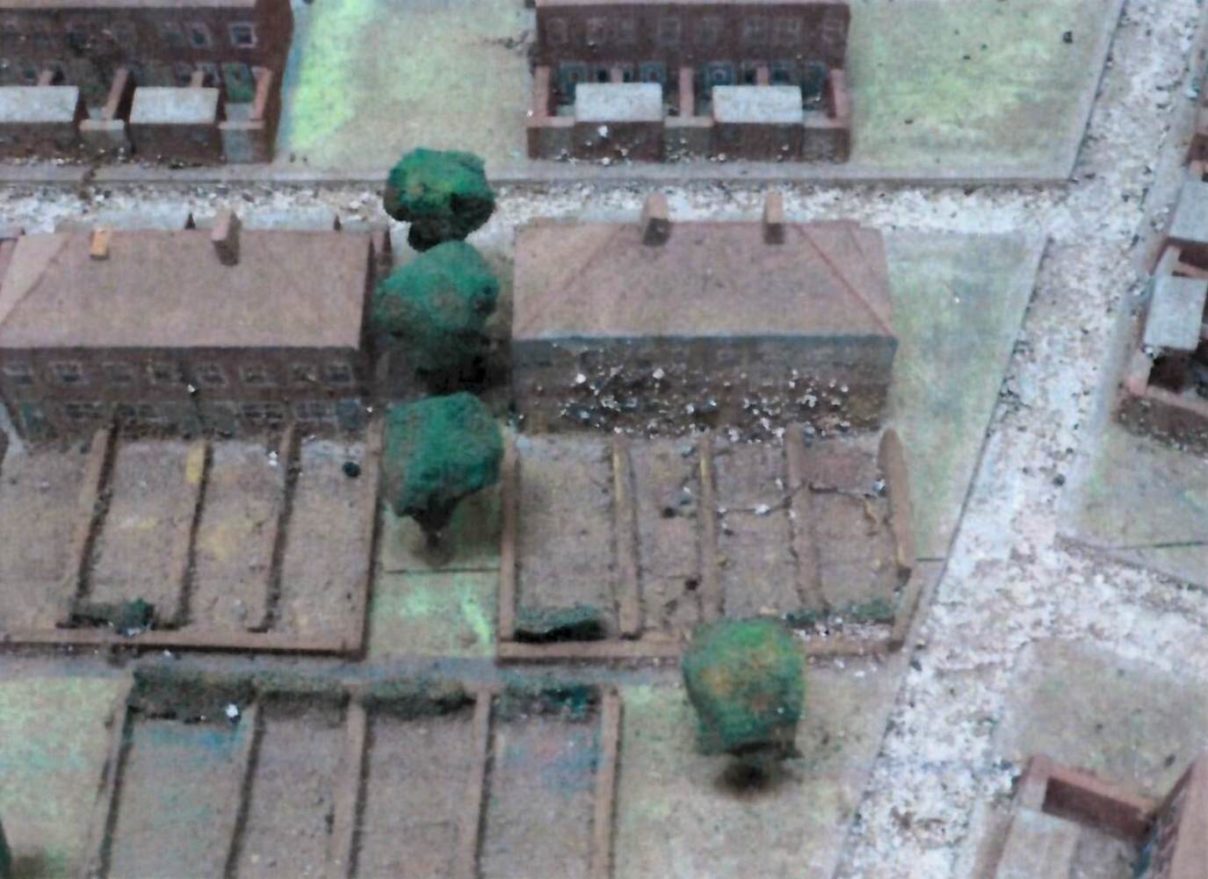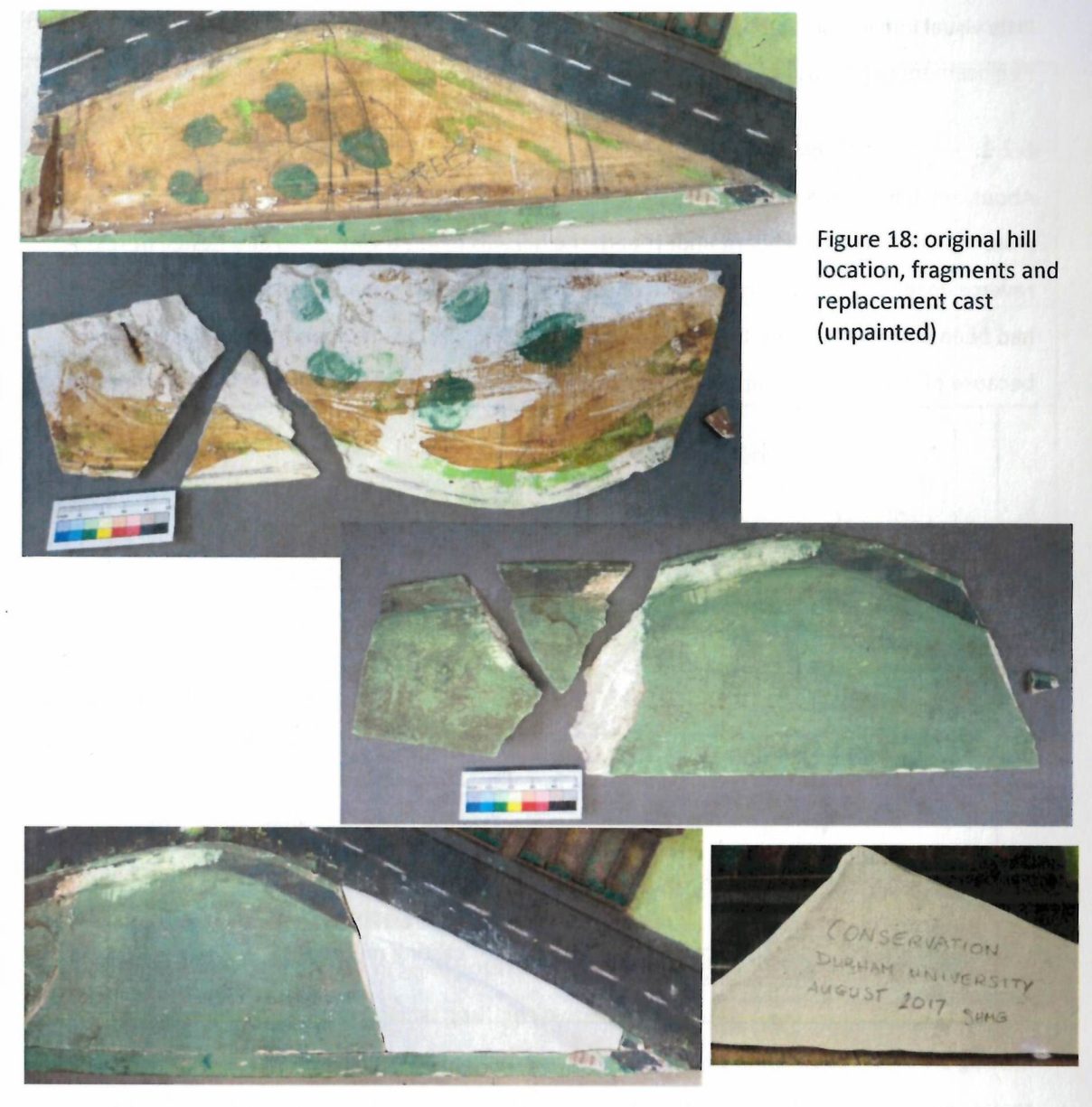Annfield Plain Model
Object
The students are currently working their way through some archaeological ceramic and glass at the moment and while they’re doing that I thought we’d look at the conservation treatment of an object from last summer. The object, a model of Annfield Plain, come from Beamish Museum and depicts a 3-dimensional model of part of a 20th century residential estate, “Annfield Place” located in Annfield Plain, Co. Durham.

Annfield Plain is a small, former mining village near Stanley in Co. Durham, Northeast England. The name is derived from “An’s field”, whilst the Plain is thought to be a reference to the inclined plane built to haul wagons up Pontop hill on the Stanhope and Tyne Railway. The area was known as Collierly, with Annfield Plain in usage only from the mid – late 19th century. Coal was mined there from the 17th century to the 1970s, when the last pit, Morrison Busty, closed in 1973.Annfield Place is an estate of terraced houses located in the Greencroft area to the southwest of the town centre.

The estate comprises 21 buildings (excluding outhouses and detached garage block), each of which is divided into 4 dwellings, including a garden. It occupies the land of the miners’ cottages plus adjacent allotment gardens of the 1920s. The number of dwellings in each period is approximately the same (old: 72 + other buildings, new: 84), although the newer houses were larger (two storeys) and had larger gardens.
The model was made for an exhibition “Then & Now” by Annfield Plain Secondary School in 1971. It represents, “Now”, i.e. 1970s Annfield Place, whereas the, “Then” model depicted part of the village in 1900. The models were donated to Beamish Museum shortly after the exhibition. They are presumed to have been made by pupils of the school.
Condition
- Dust and dirt on the surface
- A number of buildings have become detached
- There are a number of missing pieces
- Several trees have become detached
- Evidence of metal corrosion
- A section of the hill has become detached and another section is missing
- Evidence of paint flaking
- Evidence of insect infestation
Conservation

As there was evidence of an active infestation this had to be dealt with before conservation treatment could begin. The object was wrapped and sealed in order to prevent insects escaping and was placed into a freezer for two weeks in order to kill the insects and any larvae. Following this initial treatment the object was able to be surface cleaned in order to remove the loose dirt and debris. Any detached aspects of the model were removed and placed to one side, while other detritus was removed using a vacuum. The buildings and painted ground layer were then further treated using dry cleaning methods, which was particularly effective at revealing the colours of the buildings.

A number of areas on the object were incredibly fragile and therefore couldn’t undergo dry cleaning as there was a risk to the surface and paint layers. As such two different gel cleaning treatments were used; a soft gel and a rigid gel. The soft gel was able to be applied to areas that were sturdier but hadn’t been effectively cleaned using dry methods, while the rigid gel was reserved for those areas that were the most fragile and had a greater chance of being damaged from other cleaning methods. The soft gel was able to soften the dirt, which then could be easily removed using cotton wool swabs and an appropriate solvent. The rigid gel actively drew in the dirt and allowed for the surface to be cleaned without disturbing the fragile structure.

It was evident after cleaning that a number of areas on the model would require some type of support or stabilisation in order to help prevent further deterioration. The foam trees, which were made from twisted iron wire and general purpose sponge, were treated by applying a colour matched adhesive to the ‘foliage’ and by mechanically removing corrosion from the metal wire ‘trunks’ before applying a rust converter to the surface. The flaking paint was stabilised using an appropriate colour matched adhesive with matting agent to reduce the gloss. Finally the timber support, baseboard and backboard were all treated with an insecticide to help prevent a future infestation from occurring.

As stated previously there were a number of pieces of the model that had become detached in storage. As the original locations of these items were able to be found, the decision was made to reattache them using an appropriate adhesive that wouldn’t create stress or further deterioration. One small tree, two chimneys and several backyard walls were reattached using this method. Any of the treed that had become misshapen were straightened carefully using pliers.

Although a number of the missing pieces were able to be replaced using original items that had become detached but retained with the model, there were also several areas where the missing orignal material couldn’t be reattached as it had become separated from the model, including several chimneys and backyard walls. As there was clear evidence that these pieces existed on the original model, the decision was made to replace them using pieces of balsa wood, colour matched to the originals and adhered in place using a suitable wood adhesive.
Finally, there was a large section of the plaster hill that was missing while the remaining sections had become detached. Replacement and repair was justified because of the visual impact of the missing part and the ease of reversing this intervention. The missing part was modelled in plasticine forming a template to make an alginate mould for casting a replacement piece in plaster of Paris. Alginate was selected because, it is quick and easy to use, reproduces detail well and is very suitable for one-off castings. After final shaping, the replacement was marked with the date on the bottom, fitted to the original pieces and adhered lightly to the baseboard. Gaps between the pieces were filled with Flügger acrylic filler and colour matched with acrylic paint.
